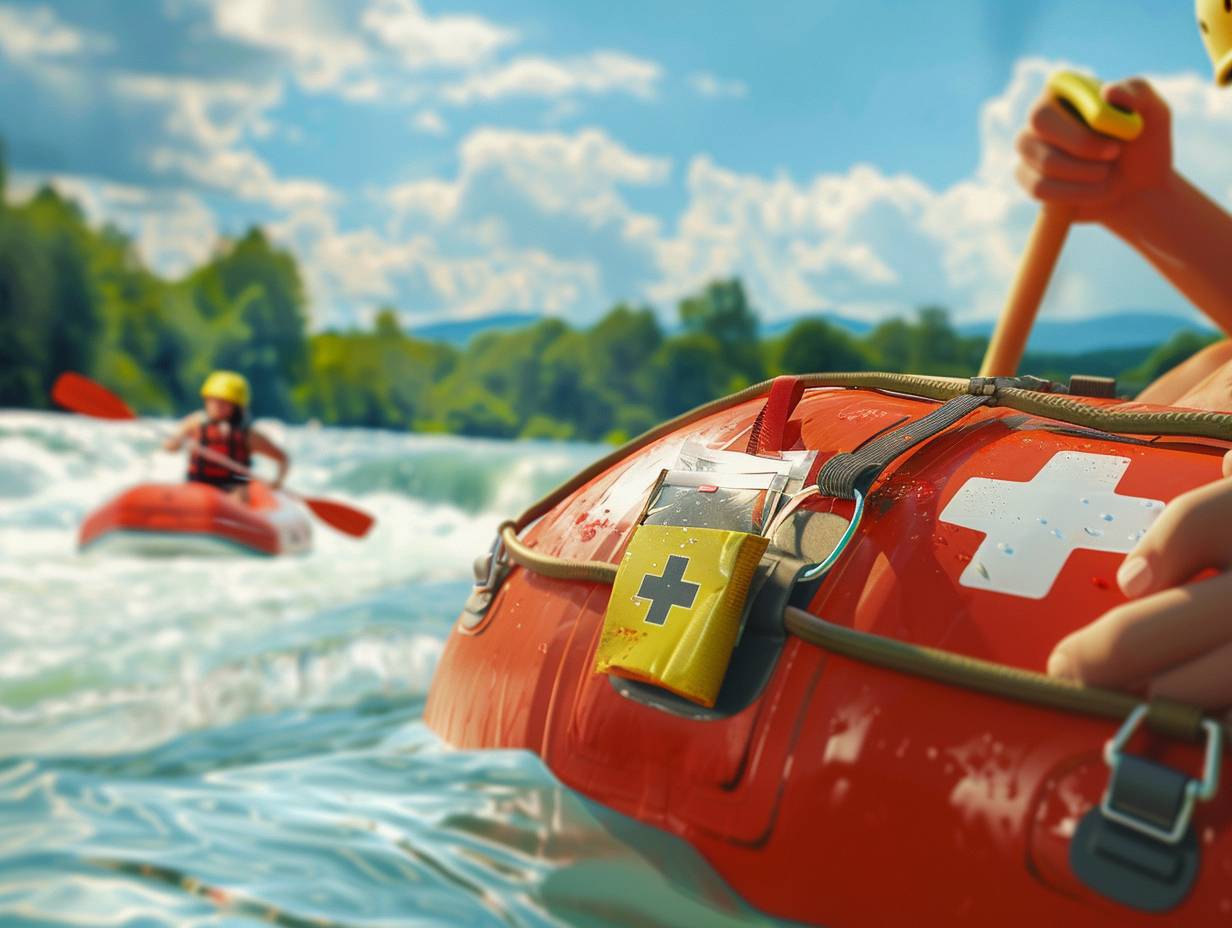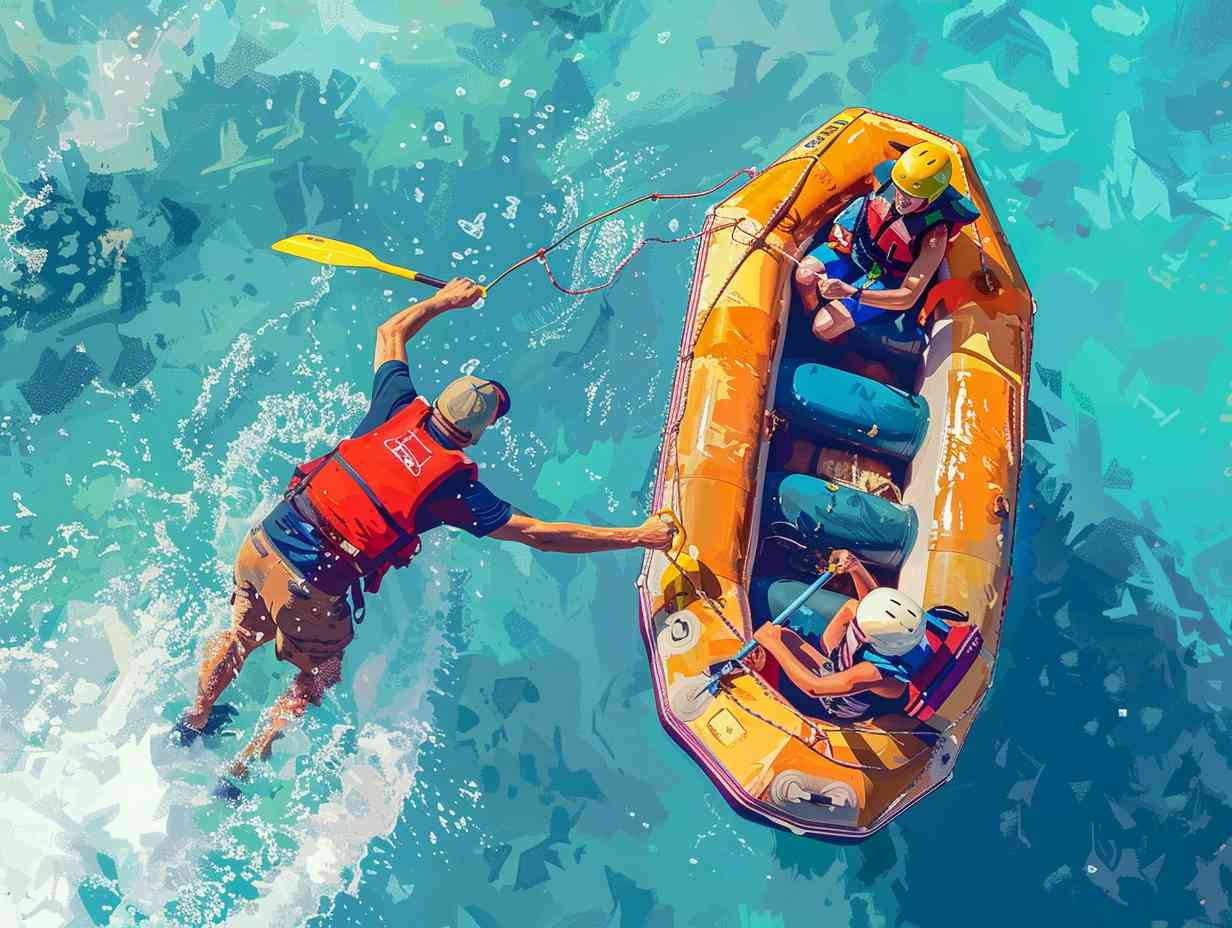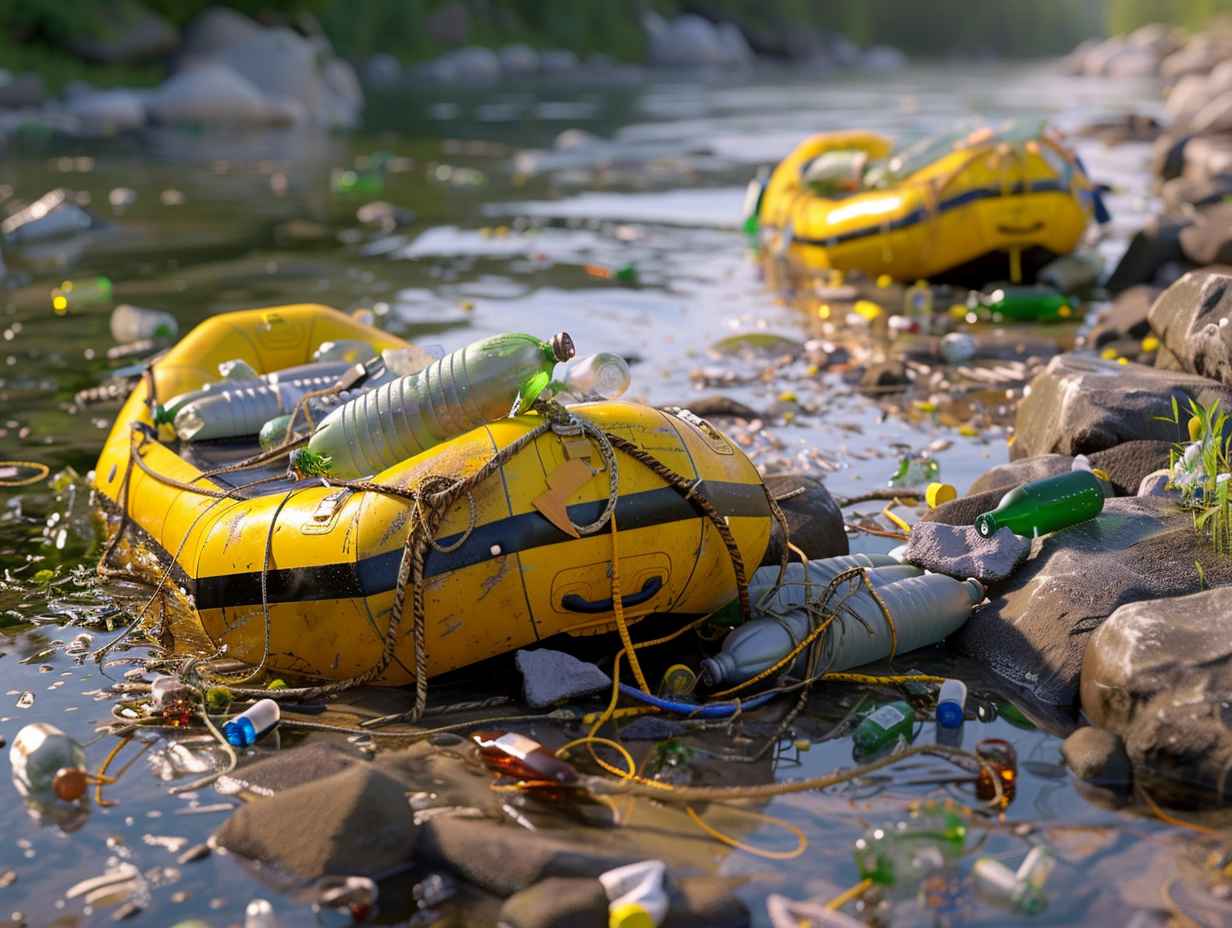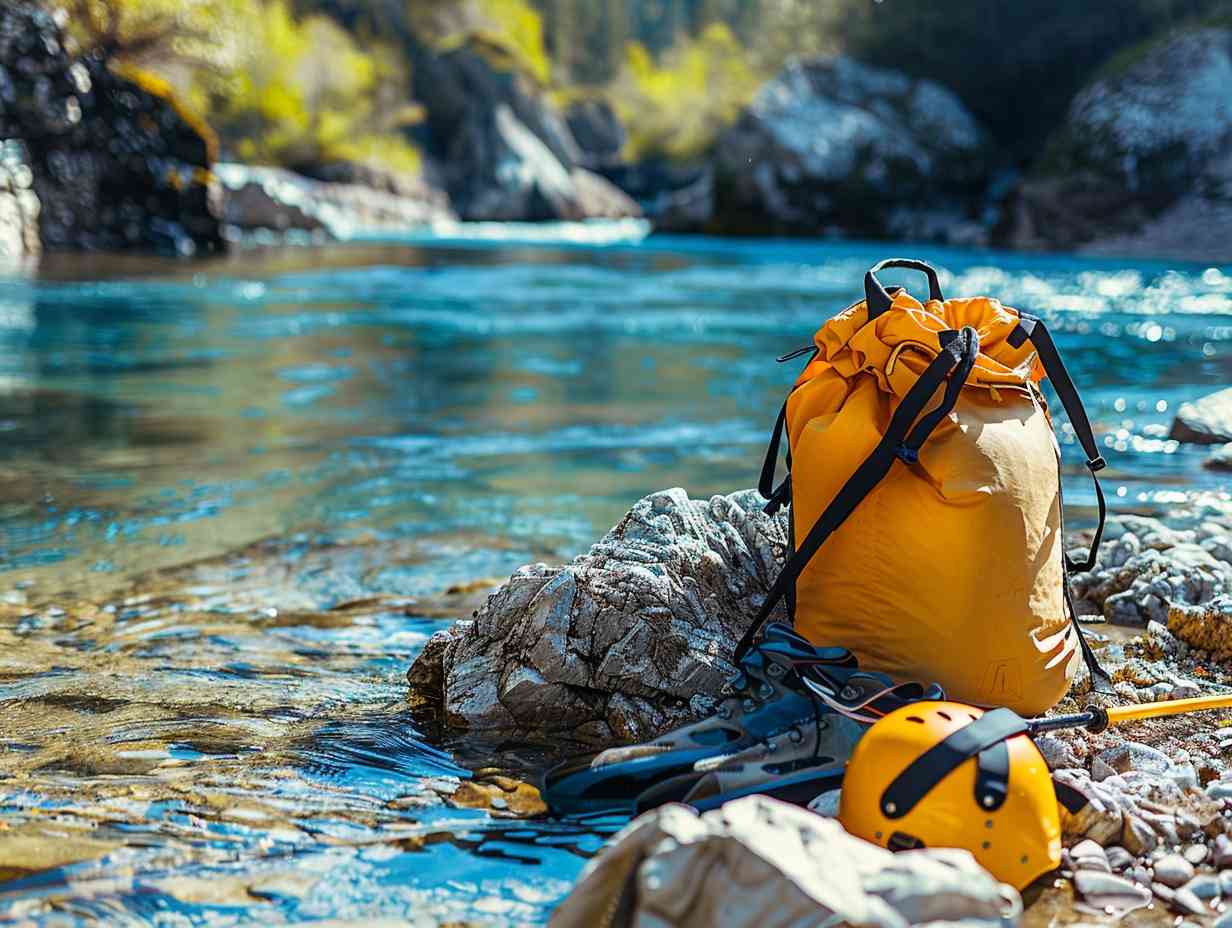
First Aid for Rafters

Imagine the exhilaration of steering the rushing waters, but also be prepared for the unexpected twists and turns that may come your way. As a rafter, knowing how to handle common injuries and emergencies can make all the difference between a thrilling adventure and a potential crisis.
From cuts and bruises to more serious water-related incidents, having the right skills and supplies at your disposal is vital. Stay tuned to discover the essential first aid techniques that every rafter should have in their arsenal.
Key Takeaways
- Apply sunscreen with high SPF and wear protective clothing to prevent sunburn.
- Stay hydrated and seek shade to avoid heat-related illnesses.
- Carry essential first aid supplies like bandages and antiseptic wipes for injuries.
- Learn CPR and rescue breathing techniques for emergency response on rafting trips.
Common Injuries on Rafting Trips
One of the most common injuries rafters experience is sunburn from prolonged exposure to the sun while on the water. To guarantee this, applying and regularly reapplying waterproof sunscreen with a high SPF is essential.
Another prevalent issue is dehydration, especially on hot, sunny days. Make sure to drink plenty of water before hitting the rapids and bring extra hydration on the raft.
Additionally, bruises and scrapes from bumps against rocks or the raft itself are common. Wearing protective gear like helmets and proper clothing can help mitigate these injuries.
Being aware of these common issues and taking necessary precautions will ensure a safer and more enjoyable rafting experience.
Essential First Aid Supplies
To make sure you’re prepared for any potential injuries while rafting, having essential first aid supplies readily available is important. Here are five items you should have in your first aid kit:
- Adhesive bandages: For minor cuts and scrapes.
- Antiseptic wipes: To clean and disinfect wounds.
- Gauze pads: For larger cuts or wounds that need to be covered.
- Ace bandage: Useful for sprains or strains.
- Tweezers: To remove splinters or ticks from the skin.
Having these supplies on hand can help you address minor injuries quickly and effectively, allowing you to continue enjoying your rafting adventure.
Immediate Actions for Water Emergencies

In the event of water emergencies, your quick and decisive actions can make a critical difference in guaranteeing safety for yourself and others. If you fall into the water unexpectedly, stay calm and try to float on your back to conserve energy.
Signal for help by waving your arms and shouting if needed. If someone else is in trouble, reach for them with an object like a paddle or throw them a floating device.
Avoid unnecessary risks and remember to prioritize safety above all else. By acting swiftly and sensibly, you can help prevent a bad situation from escalating and guarantee that everyone involved stays as safe as possible until further assistance arrives.
Treating Sunburns and Heat-Related Illnesses
If you or a fellow rafter experiences sunburns or heat-related illnesses, prompt treatment is crucial for a quick recovery and continued safety on the water. Sunburns and heat-related illnesses can quickly escalate, affecting your ability to enjoy rafting.
Here are some essential tips to help you address these issues:
- Hydrate: Drink plenty of water to stay hydrated and cool down.
- Seek shade: Find shelter from direct sunlight to prevent further skin damage.
- Apply aloe vera: Soothe sunburned skin with aloe vera gel or lotion.
- Loosen clothing: Wear loose, breathable clothing to help regulate body temperature.
- Rest: Take a break and rest in a cool area to recover from heat-related illnesses.
Importance of CPR and Rescue Breathing

Addressing the well-being of rafters extends beyond sunburns and heat-related illnesses; understanding the importance of CPR and rescue breathing can be critical in emergency situations on the water. In the event of a rafter experiencing a cardiac arrest or drowning, immediate CPR and rescue breathing techniques can make a life-saving difference.
CPR helps maintain blood flow and oxygenation to vital organs, while rescue breathing provides essential oxygen to the person’s lungs. Properly administered CPR and rescue breathing can greatly increase a person’s chances of survival until professional medical help arrives. It’s important for all rafters to familiarize themselves with these techniques and be prepared to act swiftly in case of an emergency while on the water.
Frequently Asked Questions
What Are Some Common Signs and Symptoms of Hypothermia While Rafting?
When rafting, it’s important to recognize signs of hypothermia like intense shivering, confusion, and cold skin. Stay dry and warm, remove wet clothes, and seek shelter if needed. Hypothermia can be serious, so act promptly.
How Can I Prevent and Treat Insect Bites and Stings While on a Rafting Trip?
To prevent and treat insect bites and stings while rafting, wear protective clothing, use insect repellent, and avoid perfumes. If bitten, clean the area, apply a cold compress, and use antihistamines or hydrocortisone cream for itching.
Are There Any Specific First Aid Techniques for Treating Cuts and Scrapes Sustained While Rafting?
When you’re rafting, cuts and scrapes happen. Clean wounds with water, apply antiseptic, and cover them. If bleeding persists, apply pressure. Remember, safety first - a well-stocked first aid kit is your river companion.
What Should I Do if Someone on My Raft Experiences a Panic Attack or Anxiety During the Trip?
If someone on your raft experiences a panic attack or anxiety during the trip, calmly reassure them and help them focus on slow breathing. Encourage them to express their feelings and consider taking a break if needed.
How Can I Ensure the Safety of My Belongings and Valuables While on a Rafting Excursion?
To keep your belongings safe on a rafting trip, secure them in waterproof containers or dry bags. Double-check closures and store them in designated areas. Take only essential items and leave valuables at home to minimize the risk of loss.
Conclusion
So next time you hit the rapids, remember to pack your first aid kit and be prepared for any situation that may arise.
Coincidentally, being proactive with first aid can make all the difference between a fun adventure and a potential disaster.
Stay safe out there and enjoy the thrill of rafting knowing you have the knowledge and supplies to handle any bumps along the way.
More information about First Aid for Rafters
Affiliate information declaration: We may earn revenue from the products referred on this page and participate in affiliate programs.


